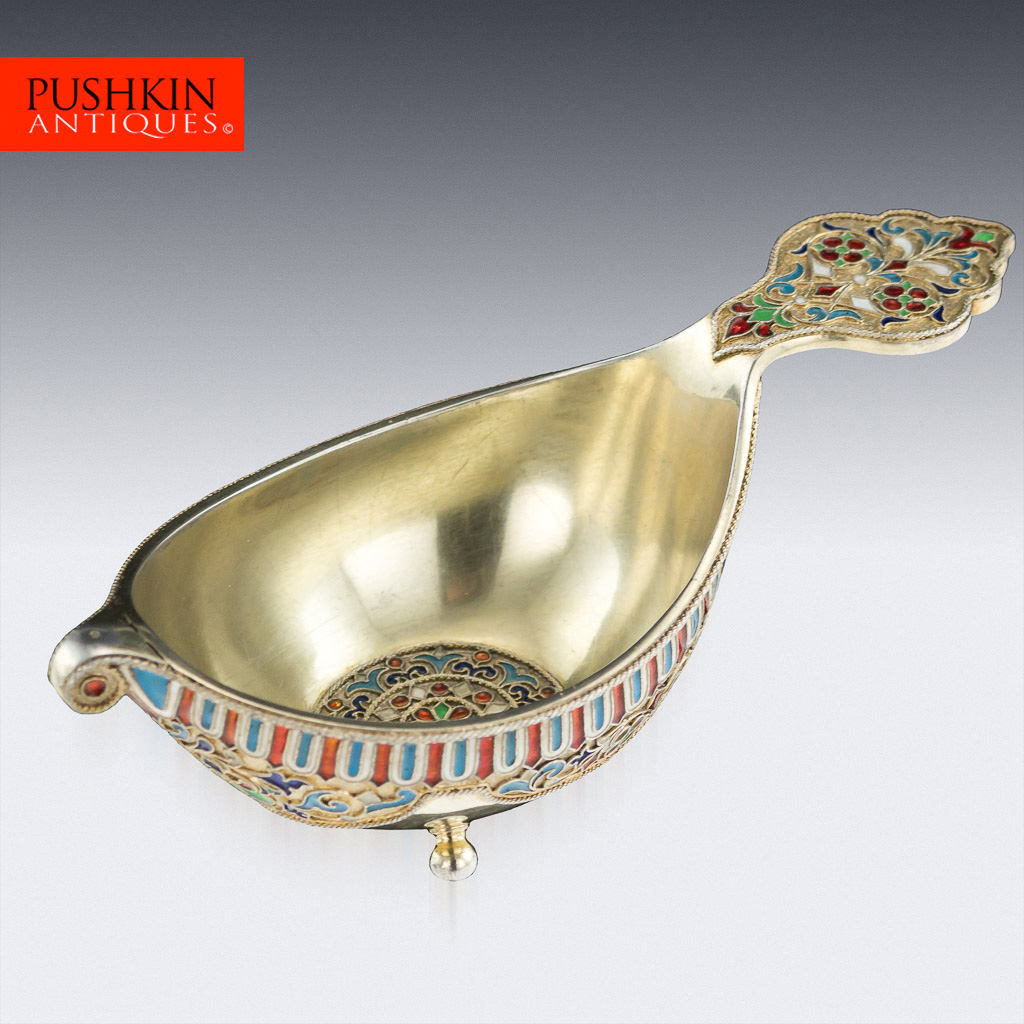An Introduction to The Russian Kovsh
The Russian silver kovsh with vivid polychrome enamels is a widely known image of Russian tradition and nowadays a very sought after object by collectors worldwide. Nevertheless few know that Russian kovsh has its origin in the 10th century.
In its essence, the kovsh is the most ancient form of Russian festive drinking vessel. Standing at the center of the table during feasts, the kovsh was meant to serve the main Russian drinks: mead, beer and kvass.
Early Russian kovshes were carved from wood into the oval form similar to lodge or water birds with one or two handles. The size came in an enormous range: from the smallest one for only one gulp to the large kovsh containing up to four buckets of drink.
It is believed that the first Russian silver kovsh appeared in Novgorod only in the 14th century. There, in the North of Russia, the traditional wooden form was reproduced in silver and gold. The most ancient find is considered to be the surviving Russian silver kovsh, which belonged to Novgorod's Archbishop Euphimiy and dated to the last quarter of the 14th century.
Later in the 16th and 17th centuries, the Novgorod silver kovsh style was perfected by the Moscow masters, who at first had just been copying the originals. But in the 17th century the design of Russian kovshes has notably evolved. The austere kovsh designs evolved into complex pieces with peculiar decorations, intricate ornaments and an abundant usage of gemstones.
In the late 17th, 18th and early 19th centuries the solemn form of the Russian kovsh acquired a new purpose by becoming the state award, that was traditionally gifted, on behalf of the Russian Tsar, to the subjects that made the highest contribution to the welfare of the country.
Silver-gilt kovshes decorated with refined engravings, golden details and hardstones became the honorable Russian Imperial distinction. The size of the ladle was strictly affected by the social status of the awarded, his merits and his position.
In the late 19th century, the resurgence in popularity of Old Russian culture, free of Western influence, inspired the Russian artistic circles, including the prolific community of silversmiths, goldsmiths and enamelers. Fabergé and other Russian silver artisans revived numerous enamel techniques and started to apply them generously on their creations.
The multi-colored cloisonne and guilloché enameled kovshes with traditional Pan-Slavic motifs made by Feodor Ruckert inspired the greatest silver workshops for a resurgence of the Russian kovsh as a pure object of art.
The plique-a-jour kovshes by Pavel Ovchinnikov, champleve enamel pieces by Ivan Khlebnikov, silver gilt kovshes with filigree enamel and precious gemstones by Maria Semeonova represented a traditional housewarming or work-anniversary gift in Imperial Russia and became an integral part of the Imperial Russian heritage.










